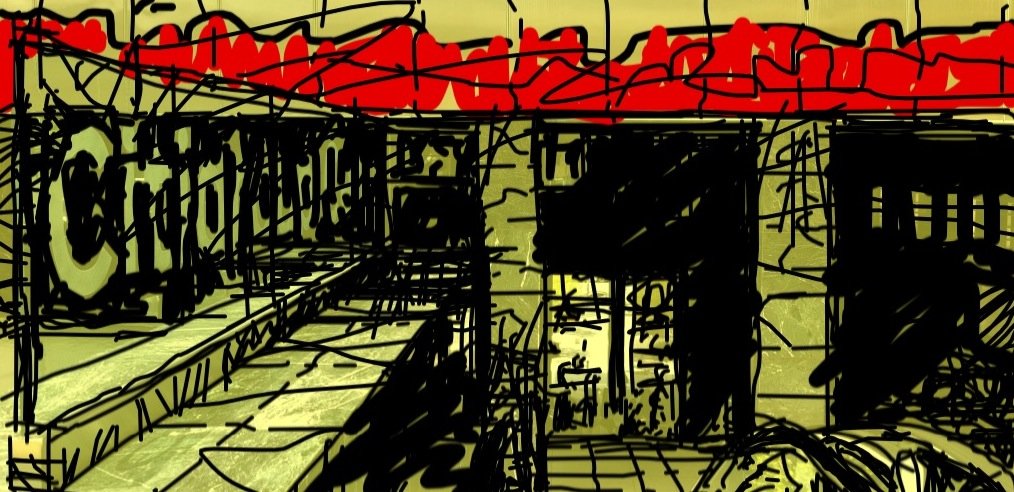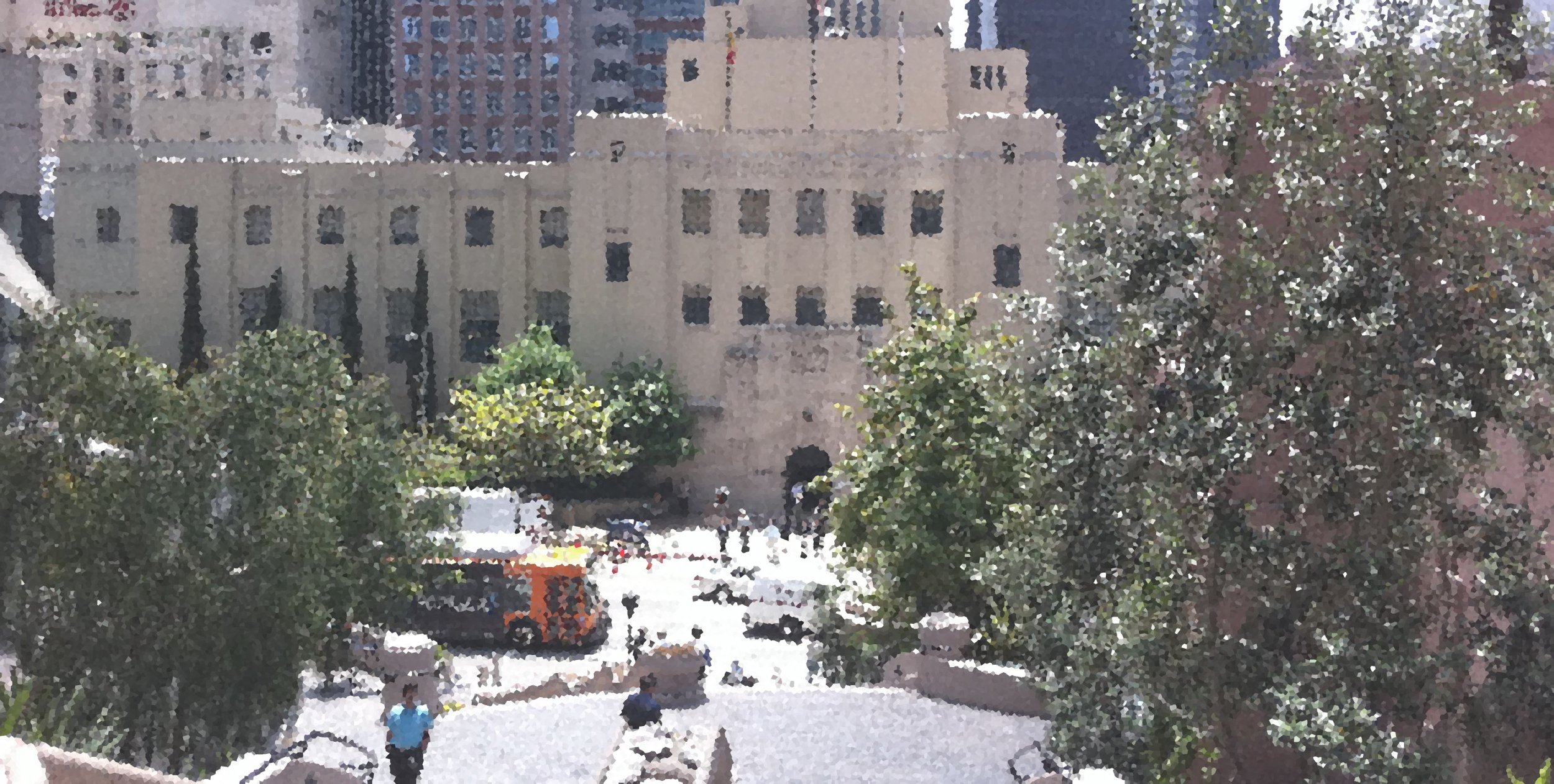THE CRAFTED CITY ARCHIVES
VISITOR TO A CITY
If a city is filled with all of the varying things of commerce and amenities, but can't offer it's inhabitants a complete experience- with transportation, and places to live, work, and recreate in reasonable proximity, it is not functioning as a complete and whole city. If the shape and form of the city are not a pleasure and inspiration to move through, then it isn't a fully formed city. The visitor judges a city, and determines if it provides a whole experience. But the people who inhabit a place need the same things, if it is going to be a place that we truly love and can function in.
THE ECONOMICS OF CRAFT
The title of an interesting article about craft in the New York Times, by NPR correspondent Alan Davidson. Interesting to me, because I'm curious about the economic models that support crafts-people and how they compare with the economics of those who craft cities, and the value to those who support the craft.
FEAR OF GENTRIFICATION
Over time, the tourist appeal of the Highline will diminish, and its infrastructure will burnish itself into the surrounding neighborhood. Hopefully it will be kept it good repair, to be treasured for many years to come. The displaced will find other quarters in the Burroughs, and some will still survive in the shadows of the trestles as before.
CULTURE THAT INHIBITS CRAFT
I'll send this out to you: parallels can be drawn in how we imagine and build cities. The culture within the government, planning, and architectural communities can have their own way of inhibiting things. I offer a few examples for your reading pleasure, and you may have a few of your own. Here goes:
TRANSITION
The architect gathers information to program and make a parti for the design of a building, new or substantially reworked. She arrives at a form based on function and an overriding set of architectural design principals. Some heed is paid to the characteristics of the site, and the practicalities of the design and the construction ensue.
LINKS IN THE CRAFTED CITY
"Guenther Demnig is the artist and sculptor behind the stumbling stones (shown in the photo in the link). Here, he installs new bricks in Berlin. He says formal memorials are too abstract. Not so with the stumbling stones. 'Suddenly they are there, right outside your front door, at your feet, in front of you,' he says."
PRUNING
It is the designer and the builder who is interested in doing great design, and leaving a mark, but who is also interested in being a part in the whole great city. It is someone who reads what the past can teach, in dialog with the designs and construction methods of our current age. It is someone who appreciates the rules as a framework for building, but who is also aware of the need for fluidity and flexibility of those rules, with a lack of unreasonable encumbrances, in order to active the extraordinary…
THE BEST USE OF RESOURCES
With a few exceptions, city builders of the 'civilized' world are confronted with considerable rules to follow, and clearances to be reviewed, in order to be allowed to build a project. These are processes devised for the public good, established to enforce the public will, to make manifest the political power of government, and to greatly influence and control what may be constructed within a community. They are also processes that happen to squander our resources, and hamper us (all of us) in building the best possible cities.
LAYERS
Cities that are more than a generation old take on the characteristics of layering, exhibiting the slices of life and its physical trappings of their years. New buildings are constructed next to old, renovations are made on top of existing structures needing repair, and there is the introduction of new uses in structures to take the place of the obsolete…
CAN'T WALK
"Which is what walking in America has become: An act dwelling in the margins, an almost hidden narrative running beneath the main vehicular text. Indeed, the semantics of the term pedestrian would be a mere curiosity, but for one fact: America is a country that has forgotten how to walk."
GREATER MULTI-FAMILY
The quality of multi-family housing around the world isn't what it could be. All of it could be improved, especially with regards to what is available to low and moderate income people.
APPLE STORES
Apple stores are textbook cases for how buildings and businesses can contribute and make a good city. They add substance and interest beyond their initial functional purpose; they are conceived and constructed with the deepest care. Although they take on a machine-like character, they are executed with considerable skill, lavished with attention to detail, and are well loved by the designers, builders, and the ones writing the checks. They are ultimate crafted urban element, a gift to each place that makes a home for them.
THE NEW ROUTEMASTER
Busses are not good urban citizens. They do carry a lot of people at a relatively low cost, but there are a lot of things they don't do well: they don't play well with other vehicles, they are a menace to pedestrians, they don't maneuver very well, they are a visual blight. They serve a specific need in public transportation, but over the years as transportation agencies have tried to control costs, buses have turned into hissing, grunting leviathans.
URBAN MASS TRANSIT IN THE HILLS
Cities are created by many thousands of big and little decisions and commitments. Building a gleaming escalator in the middle of a poor hillside neighborhood may seem quixotic at best, and a horrible mis-allocation of resources at worst. I believe that the Medellín government, if it can maintain its commitment, will have made a wise choice. If the new escalator system is well cared for over time, I am quite certain that this neighborhood will flourish.
UN-CRAFTED CITY
"Without identity, a sense of both personal and community pride is lost. Though the various posters that are up around the city advertising new developments present them in a nice, clean, friendly and liveable condition, the architectural production they depict seems to lack inspiration."
A TALE OF TWO CITY PROJECTS
Two projects, similar types of urban design philosophies, one loved, the other… not.
CITIES ON THE EDGE
"Cities are brokers of complex truths, the result of decisions that are registered on their very surfaces. Three exemplars in this regard are New Orleans, Detroit, and Phoenix; in Detroit parlance- the “New Big Three.” These cities are serving as the scouts for the rest of the nation as they confront some of our most pressing challenges."
EVERYTHING WE WANT
Shopping can be frustrating, or an exercise in spending too much, but we also know that it can be richly pleasurable. What about finding a way to go back to that local shop, a place that happens to be easy to get to (maybe even walk to!), has the stuff we want, and is priced well? That is certainly a way to incite pleasurable shopping. It would be a difficult, yet delicious problem to solve-perhaps never completely solvable (that's why it's 'unobtainable'). The diverging forces of processing and manufacturing, transport and marketing don't make it easy, and it's getting more difficult every day. Yet this may be the time to try and achieve it.
THE PRIVATE CIRCLE
The Public
The Semi-Public
The Semi-Private
The Private
You don't have good urban design, you don't have architecture without all four. Don't cast away the project because it dimly resembles some government building, or that it relays on exhausted planning models. Simply recognize that it's missing two of the four things that would make it great.



















